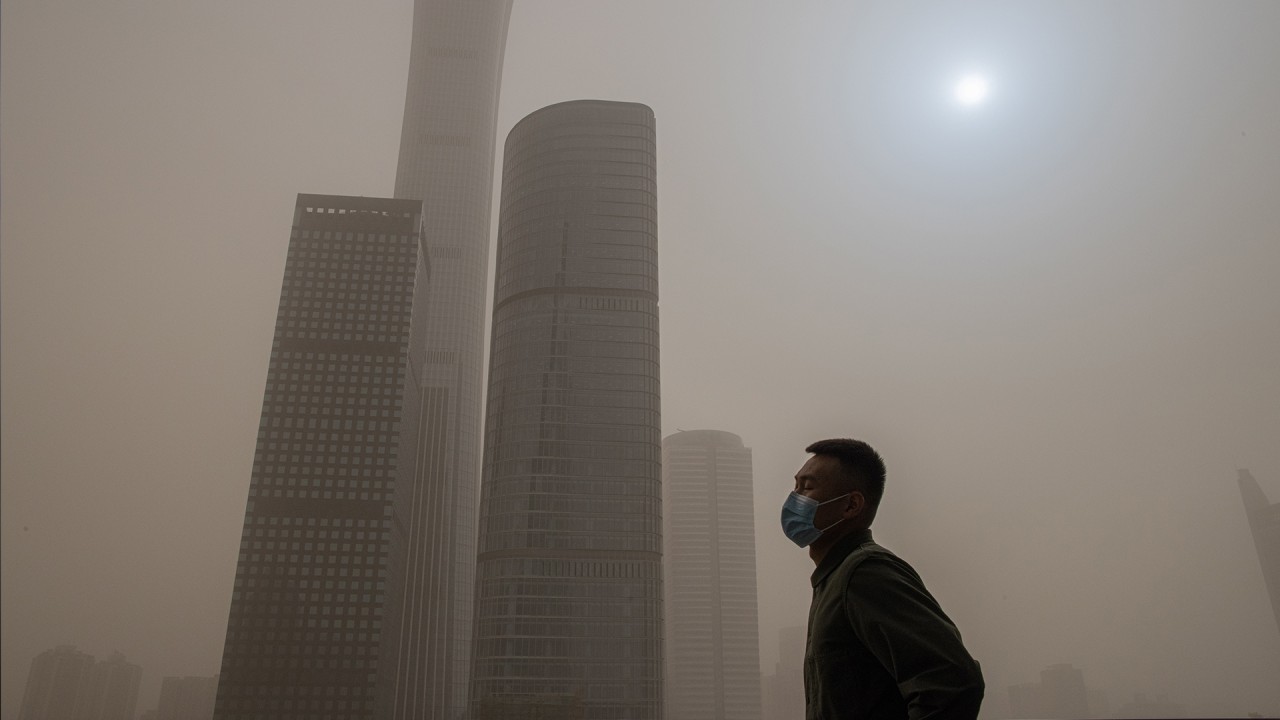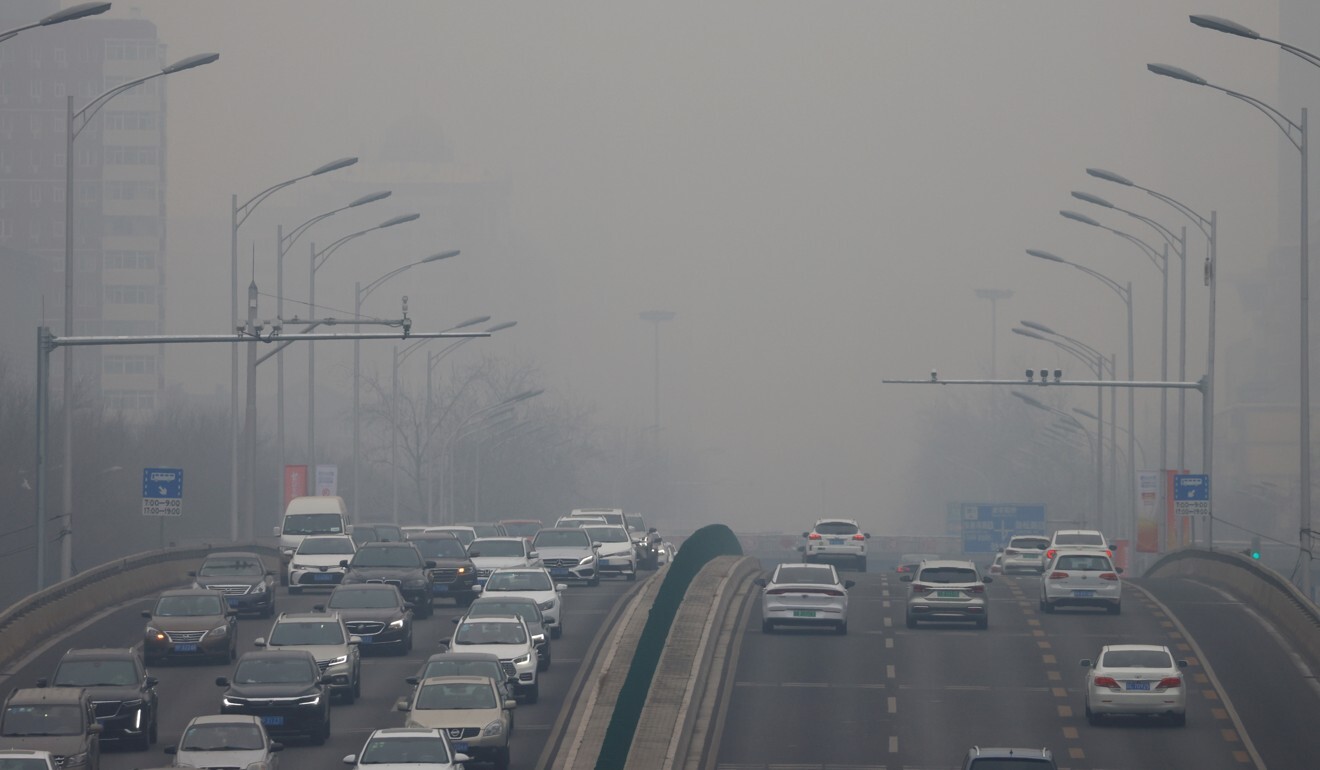
US embassy in Beijing turns attention to ozone levels more than a decade after pollution updates spurred authorities into action
- The decision to start publishing PM2.5 levels on Twitter in 2008 helped push the Chinese authorities into becoming more transparent
- While the city’s notorious pollution levels have generally improved, levels of ozone have been on the rise in recent years
When the US embassy in Beijing started tweeting figures from its rooftop air quality monitor it did not anticipate the far-reaching consequences.
It started publishing hourly measurements of PM2.5 levels – the most dangerous small particles – on Twitter in March 2008 at a time when the city was choking on dense smog.
The tweets eventually prompted the Chinese authorities to start releasing that data themselves after the US embassy readings started to appear on social media platforms such as Weibo.
More than a decade later, the embassy has added ozone levels to its air quality updates – but this time the move is unlikely to make any ripples because the Chinese authorities already publish the information.
In an article posted online early this month, the embassy said its data showed Beijing’s ozone pollution has worsened in recent years. It said the number of “unhealthy” and “very unhealthy” days had jumped from 47 in 2014 to 89 last year.

01:45
Fresh sandstorm hits Beijing following its worst storm in a decade
It defines “unhealthy days” as when people may experience health effects and vulnerable groups – including children, the elderly, asthmatics and those who are active outdoors – may experience more serious effects, while “very unhealthy days” increase the risk for everyone.
Ma Jun, director of the Beijing-based Institute of Public and Environmental Affairs, said the US embassy’s move had had little impact because China has become more transparent in releasing its data.
“The US embassy’s posts mainly promoted PM2.5 data release in China a decade ago, but the situation is different now. China began to publish hourly monitoring data of ozone in 2013 – much earlier than the US embassy, so the response [from China] is rather small,” he said.
“China didn’t release the PM2.5 data back in the early 2010s, so people felt scared or panicked and that’s why there was a big response from society,” he said.
Beijing ‘hit peak carbon emissions in 2012 due to war on pollution’
He still remembers the winter of 2011 when several rounds of heavy smog hung over Beijing, pushing the city’s airport to cancel hundreds of flights.
“There was ‘heavily polluted weather’ for 10 consecutive days and you could barely see the buildings in front of you,” he said.
It sparked a massive public debate online and promoted the introduction of China’s new ambient air quality standards. Some prominent public figures, such as real estate tycoon Pan Shiyi, reposted the US embassy postings on their own social media platforms, amplifying their effect.
In 2012, more than 20 non-governmental organisations in China launched a public campaign calling on individuals to buy their own monitoring machines to keep tabs on the air quality in their neighbourhood.

“We want to tell the public that they have the right to know about pollution, and we hope the data can be made publicly available,” said Zhao Liang, an environmentalist and participant in the campaign.
In late December 2011 the environment ministry approved a new air quality standard that included PM2.5 and ozone levels for the first time and the country started publishing air quality data in 2013.
Beijing started a five-year “war on pollution” in 2013, followed by a three-year air quality improvement action plan. During this time its air quality has improved significantly,
Its air quality has improved significantly during the period, with the annual concentration of PM2.5 dropping from about 90 micrograms per cubic metre in 2013 to 38 last year. The World Health Organization’s recommendation for the annual mean of PM2.5 is less than 10 micrograms per cubic meter.
Chinese inspectors vow to ‘get tough’ on local officials over pollution
Ozone is formed by nitrogen oxides (NOx) reacting with volatile organic compounds (VOCs), said Ma.
“It has many sources and we need to control the ratio of NOx and VOCs to combat the pollution, and that’s why it’s so hard to deal with,” he said.
Zhao Liang said he was not aware of the US embassy’s ozone postings, but his friends started paying attention to the problem in 2019.
“PM2.5 has been the key indicator of air pollution for a long time. When it falls to a level that people are satisfied with, they will focus on other pollutants,” he said.

